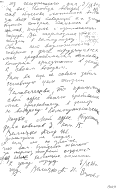
 On the Crimean Tatars
On the Crimean Tatars
Resistance to Soviet rule, separatism, and widespread collaboration with the German occupation forces were among the official reasons for the deportation of these non-Russian peoples. The possibility of a German attack was used to justify the resettlement of the ethnically mixed population of Mtskheta, in southwestern Georgia. The Balkars were punished for allegedly having sent a white horse as a gift to Adolf Hitler.
The deportees were rounded up and transported, usually in railroad cattle cars, to Uzbekistan, Kazakhstan, Kirgizia, and Siberia -- areas called "human dumping grounds" by historian Robert Conquest. Most estimates indicate that close to two-fifths of the affected populations perished. The plight of the Crimean Tatars was exceptionally harsh; nearly half died of hunger in the first eighteen months after being banished from their homeland.
In February 1956, Nikita Khrushchev condemned the deportations as a violation of Leninist principles. In his "secret speech" to the Twentieth Party Congress, hestated that the Ukrainians avoided such a fate "only because there were too many of them and there was no place to which to deport them." That year, the Soviet government issued decrees on the restoration of the Chechen-Ingush Autonomous Republic and the Kabardino-Balkar Autonomous Republic, the formation of the Kalmyk Autonomous Oblast', and the reorganization of the Cherkess Autonomous Oblast' into the Karachai-Cherkess Autonomous Oblast'. The Crimean Tatars, Meskhetians, and Volga Germans, however, were only partially rehabilitated and were not, for the most part, permitted to return to their homelands until after the disintegration of the Soviet Union in 1991.

Please follow the guided tour or have a look at one of these showcases:
When you have seen them all you should walk back to the entrance hall